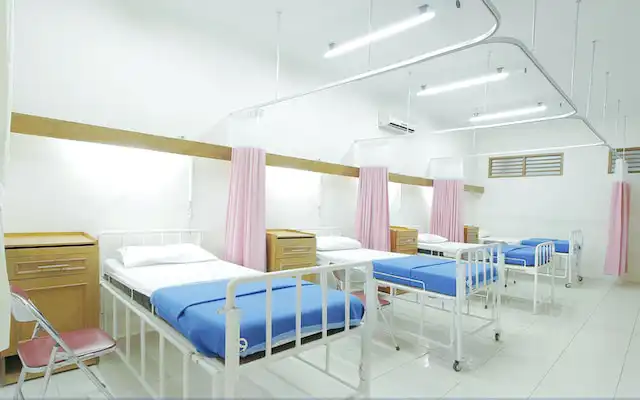
Africa Telemedicine Outlook and Opportunities
Region:Africa
Product Code:KR452
January 2017
121
About the Report
Albeit recent improvements in the country's health care services, the health of large proportion of Africans is still not at par. Sub-Saharan Africa has ~ % of the global population; however, it carries ~% of the world's disease burden. The continent is deprived of the healthcare conditions which could be justified by the basic indicators of health with high child and maternal mortality rates, low birth weights of the children, and poor sanitation and healthcare access. Moreover, Africa has only ~ physicians per 1000 people with widespread communicable diseases which is low as compared to other countries.
With foreign players entering into the Kenya telemedicine market coupled with efforts of the government of country, telemedicine market in Kenya is expected to grow at rapid pace during the future. The government plan to establish eHealth in five hospitals all across the country, which would improve the healthcare system of Kenya by increasing the probability of accurate diagnosis and providing information and accessibility to available treatment options.
Inspite of the slow start, telemedicine in South Africa still holds opportunity as a tool to support the delivery of healthcare especially in rural regions of the country. Though the regulations don't allow people to doctor conversation through telemedicine platform, but conversation between doctors in rural hospital with specialist doctor in specialized hospital would also help in better diagnosis and treatment. Moreover, telemedicine had attracted considerable interest in innovation among academics, researchers, private enterprises and health professionals, which could be advocated by the noteworthy achievements made by public health domain in South Africa.
mHealth could be considered as most successful telemedicine type in South Africa which has revolutionized healthcare in the country. With the mobile penetration rate of ~% in the country, the telemedicine market is expected to record high growth in South Africa in future also.
It has been observed in various cases that a successful effort would require the indulgence of both public and private sector. For instance, current investment in the telemedicine space such as the setting up of teleconsultation centers (TCCs) has been sponsored by the Novartis Foundation. However, government investment is the key to develop this across the country. Moreover, Government support is also required for the regular payments of the staff and the maintenance of the equipment.
All the eHealth projects implemented were initiated as small scale pilot projects in the country. On the gloomy side, none of the programs were able to successfully correspond to other health systems or share information across geographies or technologies. Most of these projects were discontinued or not running sustainably on the back of poor enabling environment, lack of involvement of the stakeholders in all the stages, low funding and deficiency of a common system to integrate multiple systems in the country among other reasons.
Uganda is one of the least developed countries in the world. The country has around ~ pathologists which work in key regional referral hospitals. For improving the healthcare situations in the country, government is continually making efforts towards improvisation of telemedicine. mTrac has been one successful project in telemedicine industry in Uganda which is a scalable solution to the challenge with health service delivery. mTrac would work on any mobile platform, broadening the process of data collection by leveraging SMS to simplify the process of reporting through a series of keyword codes and fields.
- Current Health Condition of Africa level as well as on country level for South Africa, Kenya, Ghana, Nigeria, Uganda, Botswana, Cameroon and Ethiopia
- Investment requirements for telemedicine in Africa
- Growth Drivers, Trends and Developments, and Challenges in Africa E-Health Market
- Current E-Health initiatives on country level for South Africa, Kenya, Ghana, Nigeria, Uganda, Botswana, Cameroon and Ethiopia
- Future government Plans for South Africa, Kenya, Ghana, Nigeria, and Uganda
- SWOT Analysis for Africa telemedicine market
- Success case studies on country and regional levels
- Analyst Recommendations and Optimal Working Model
Products
Telemedicine, E-Health, Tele Consultatation, Triage, Teleradiology, m-Health, Telepathology
Table of Contents
1. Executive Summary
2. Appendix
2.1. Market Definitions
2.2. Research Methodology
Final Conclusion
3. Current Scenario of Healthcare in Africa
4. Kenya
4.1. State of Healthcare in Kenya
Scenario of Healthcare Providers
Country Profile
4.2. Telemedicine So Far
4.2.1. National Telemedicine Initiative
4.2.2. Colombia Africa
4.2.3. Telepathology
4.2.4. Sema-Doc
4.2.5. Pan-African e-Network Project
4.2.6. AMREF Project
4.2.7. Medishare Africa
4.3. Trends and Developments in Kenya Telemedicine Market
4.4. Challenges in Kenya Telemedicine Industry
4.4.1. Lack of Electricity
4.4.2. Confidentiality of Information
4.5. Future Plans of Government for eHealth Sector
4.5.1. Vision 2030
Specific Objective
General Objective
Investment Model for Implementation of ICT Model in Selected Hospitals under Vision 2030
4.5.2. GlobalMed Telemedicine Solutions
4.6. Conclusion
4.7. Success Case Studies in Kenya
E-Learning for Nurses
Use of MIMS
5. South Africa E-Health Market
5.1. State of Healthcare in South Africa
Public and Private Healthcare System
Expenditure
National, Provincial and Local
National Health Insurance
Burden of Disease
Telemedicine
5.2. Country Profile
5.3. Telemedicine Projects So Far
5.3.1. Teledermatology
5.3.2. Teleradiology
5.3.3. Mindset Health Channel
5.3.4. Primary Health Care Telemedicine Workstation
5.3.5. South Africa / China Bilateral Agreement
5.3.6. Rapid Deployment Field Hospital / Mobile Pathlab
5.3.7. KwaZulu-Natal Telemedicine Project
5.3.8. Project Masiluleke
5.3.9. MomConnect
5.3.10. FOLUP
5.3.11. Primary Health Care App
5.4. Regulatory Landscape
5.4.1. POPI ACT and mHealth
Principles of POPI Act
5.4.2. Telemedicine Solutions
5.4.3. State Information Technology Agency (SITA)
5.4.4. The Minimum Information Interoperability Standards (MIOS)
5.5. Conclusion
5.5.1. Key Opportunities for mHealth in South Africa in Future
5.6. Recommendations
6. Nigeria E-Health Market
6.1. State of Healthcare in Nigeria
Country Profile
6.2. Current Scenario
Healthcare IT in Nigeria
6.3. Current Policy Implementations
Other eHealth Initiatives
Conclusion
6.4. Major Challenges for the Health Care Sector in Nigeria
6.5. Government Policy Implementations for Future
6.5.1. Recommendations to Improve Health ICT Enabling Environment
6.6. Success Case Study in using ICT in Nigeria
7. Ghana
7.1. State of Healthcare in Ghana
Country Profile
7.2. Snapshot of Telemedicine Pilot Project in Ghana
7.3. Challenges in the Establishment of the Telemedicine Centers in Ghana
Requirement of Constant Government Support
Training of the Workers
Payments from National Health Insurance Scheme
Shortage of Electric Power Supply
e-Health Initiatives in Ghana
Conclusions
7.4. Success Case Studies in Ghana
Graphical Representation of MOTECH working Model
8. Uganda
8.1. State of Healthcare in Uganda
Country Profile
8.2. Current E-Health Scenario- Telepathology and Second Opinion
Use of DHIMS2
8.3. Challenges Faced in Implementing E-Health Policies
8.4. Current Situational Analysis
8.5. Government Future Policy Objectives
8.6. Success Case Study: Uganda's Approach for Health Service Delivery Through mTrac
9. Botswana
9.1. State of Health Care in Botswana
9.2. Country Profile- Botswana
9.3. Snapshot of Teledermatology in Botswana
10. Cameroon
10.1. State of Health Care in Cameroon
10.2. Country Profile- Cameroon
10.3. Current e-Health Scenario
10.3.1. ICT in Healthcare
10.3.2. MTN Health
10.3.3. eHealth-Cameroon
11. Ethiopia
11.1. State of Health Care in Ethiopia
11.2. Country Profile- Ethiopia
11.3. Current e-Health Scenario
Electronic Medical Records via SmartCare
Health-net
Telemedicine Pilot Project
11.4. Ethiopian National E-Health Strategy
12. SWOT Analysis
13. Multinational E-Health Initiatives in Africa (Case Studies)
13.1. m4RH
13.2. RAFT
13.3. Prerequisites to Start a Telemedicine Centre
14. Recommendations
14.1. Working and Business Model Selection
14.2. Partnerships
14.3. Return on Investment
14.4. Government Support
14.5. Awareness Campaigns
14.6. Optimization of ICT Infrastructure
14.7. Improving the Training and Maintenance of Infrastructure
14.8. Use of Updated Technology
Disclaimer
Contact Us
Why Buy From Us?

What makes us stand out is that our consultants follows Robust, Refine and Result (RRR) methodology. i.e. Robust for clear definitions, approaches and sanity checking, Refine for differentiating respondents facts and opinions and Result for presenting data with story

We have set a benchmark in the industry by offering our clients with syndicated and customized market research reports featuring coverage of entire market as well as meticulous research and analyst insights.

While we don't replace traditional research, we flip the method upside down. Our dual approach of Top Bottom & Bottom Top ensures quality deliverable by not just verifying company fundamentals but also looking at the sector and macroeconomic factors.

With one step in the future, our research team constantly tries to show you the bigger picture. We help with some of the tough questions you may encounter along the way: How is the industry positioned? Best marketing channel? KPI's of competitors? By aligning every element, we help maximize success.

Our report gives you instant access to the answers and sources that other companies might choose to hide. We elaborate each steps of research methodology we have used and showcase you the sample size to earn your trust.

If you need any support, we are here! We pride ourselves on universe strength, data quality, and quick, friendly, and professional service.















